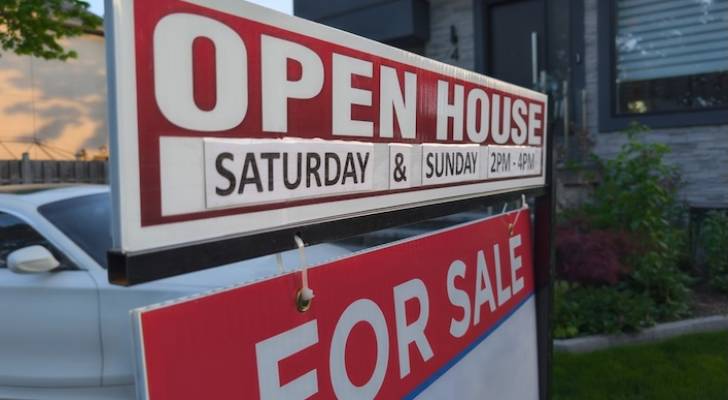
Frustrated homeowners across the U.S. are reluctantly slashing asking prices by tens of thousands of dollars as the real estate market shifts out of their favour.
After years of soaring home values, today’s market tells a different story — buyers are cautious, mortgage rates are high and inventory is swelling.
Don’t miss
- I’m 49 years old and have nothing saved for retirement — what should I do? Don’t panic. Here are 5 of the easiest ways you can catch up (and fast)
- Gain potential quarterly income through this $1B private real estate fund — even if you’re not a millionaire. Here’s how to get started with as little as $10
- You’re probably already overpaying for this 1 ‘must-have’ expense — and thanks to Trump’s tariffs, your monthly bill could soar even higher. Here’s how 2 minutes can protect your wallet right now
According to a recent Redfin report, the median U.S. home seller is now asking for 9% more than what buyers are willing to pay. That amounts to a roughly $39,000 gap — a significant miss for those relying on their home sale to fund their next move.
As sellers adjust to a slower pace and more selective buyers, they ask a critical question: Should I price high and wait, or price low to sell fast?
Here’s what the data says about the risks of waiting, the rewards of pricing strategically and how to strike the right balance.
The financial risks of delaying price cuts
Holding out for top dollar may sound appealing, but it can cost you in today’s market. Homes that linger on the market accrue thousands in carrying costs, from mortgage payments and property taxes to maintenance and insurance.
Take, for example, a $500,000 home with estimated monthly costs of $3,000. If it sits unsold for three extra months, that’s $9,000 in out-of-pocket expenses — not including price reductions or buyer concessions.
There’s also market risk. Rising inventory is giving buyers more leverage. Realtor.com data show active listings were up 30% year-over-year in April. As more properties hit the market, sellers risk being edged out by newer, better-priced homes.
And then there’s opportunity cost. MarketWatch reports sellers like Spencer Bauman in Utah, who had to cut $75,000 from his asking price after 72 days with no offers, face delays in moving forward with their next purchase or financial goals.
Read more: Want an extra $1,300,000 when you retire? Dave Ramsey says this 7-step plan ‘works every single time’ to kill debt, get rich in America — and that ‘anyone’ can do it
Benefits of a strategically priced home
Getting the price right from the start can lead to a faster sale, less stress and more money in your pocket.
Most buyer activity happens in the first two to three weeks of a listing. If a home is overpriced during that crucial window, it can quickly become a “stale listing.”
Buyers may assume something is wrong with it or use its time on the market to negotiate steep discounts.
A well-priced home, by contrast, can generate more interest, leading to faster offers and fewer concessions. It also keeps your timeline predictable which is an essential factor if you rely on the proceeds for a down payment or avoid bridge financing.
“The most important thing you can do as a seller is fairly price your home. If you overprice, chances are you’ll get no activity, and then it will become even harder to recoup your investment," Redfin Premier Real Estate Agent Chaley McVay said in the report.
What’s the middle ground?
You don’t have to underprice your home — just price it smartly. Start by getting a realistic valuation based on comparable sales in your area, not wishful thinking.
In some markets, pricing slightly below the competition can spark buyer interest and lead to multiple offers. It also gives your listing a psychological edge.
A home priced at $489,000 feels more approachable than one at $500,000, even if the difference is negligible.
Finally, set a timeline. If your home hasn’t attracted serious interest within 21 days, be ready to reevaluate your price or make improvements that could boost appeal.
In today’s market, the best strategy is to stay nimble. Sellers who understand buyer sentiment and act quickly, instead of clinging to yesterday’s prices, are likely to close the deal.
What to read next
- Millions of Americans now sit on a stunning $35 trillion in home equity — here’s 1 new way to invest in responsible US homeowners while targeting a 14%-17% IRR
- Robert Kiyosaki warns of a ‘Greater Depression’ coming to the US — with millions of Americans going poor. But he says these 2 ‘easy-money’ assets will bring in ‘great wealth’. How to get in now
- Here are 5 ‘must have’ items that Americans (almost) always overpay for — and very quickly regret. How many are hurting you?
This article provides information only and should not be construed as advice. It is provided without warranty of any kind.